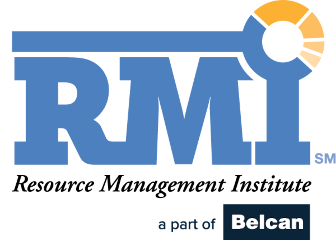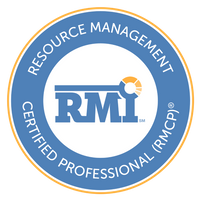The Resource Management Office concept is growing fast. According to the Resource Management Institute (RMI), more than two thirds of professional and consulting services teams, half of enterprise/IT organizations, and one quarter of product development teams have an RMO established. That’s good news for those industries working hard to improve project performance, staffing efficiency, customer satisfaction (internal and external), and employee engagement.
As the RMO community evolves, like any other industry business transformation, some growing pains are common. The RMI is staying on top of these RMO developments and has identified five of the most common critical points of failure which are addressed in this article.
Critical point of failure #1:
Symptom – Your RMO was created but resource management (RM) performance in the enterprise remains largely unchanged and people are wondering why the investment in an RMO. The RMO has been relegated to conducting what are largely administrative tasks.
Cause – When this condition exists, a typical driver is that the RMO was given responsibility but not authority to drive change and new best practices in the industry. Running an effective RMO is no different than any other business function in that expected outcomes need to be clearly defined and appropriate authority along with responsibility be given to the person tasked with running the RMO. The interjection of an RMO is often a cultural hurdle for firms used to a more siloed approach to RM.
Critical point of failure #2:
Symptom – The RMO was created but due to workload the team is largely conducting fire fighting in the form of staffing triage, while generally RM processes continue to be executed by the delivery teams with little or no change from prior methods of RM.
Cause – Too many RMOs begin understaffed. This happens for many reasons. Most common reasons are: 1) Organizational reluctance to invest in something new and untested which is manifested most often as ‘you must prove it first before we give you more people’ 2) Failure to heed industry norms in the form of benchmarks for RMOs. The RMI has plenty of research which new or existing RMOs can use to estimate needed investments and resourcing. Check out the ‘Insights’ tab of the website for lots of free and valuable research.
Critical point of failure #3:
Symptom – The RMO is off to a slow start and confidence in this new function is waning in the enterprise.
Cause – Most often what we see is too much wasted time reinventing the wheel – in this case for some reason too many companies think their RM needs are so unique they must create a new process from the ground up, wasting valuable time and money which could be better spent on training, process refinement, and actual execution leading to some near term ‘wins’ for the RMO. Just-in-Time Resourcing® has quickly become the industry standard, and this proven process is available for use in any company that has sent someone to the RMI’s Resource Management Certified Professional (RMCP)® program. Once the process is adopted, training those involved in executing the target process consistently puts the focus more appropriately on execution and with less need for triage and building things from scratch.
Critical point of failure #4:
Symptom – Progress reducing staffing shortages or overages, and overall improvements in staff utilization are fleeting.
Cause – One of the biggest primary inhibitors to effective RM is the continued existence of delivery team silos and a lack of creating a centralized view to all the available resources in the enterprise. RMI research clearly shows that effective RM is greatly enhanced when a commitment to RM centralization is put into practice.
Critical point of failure #5:
Symptom – Despite putting in place solid RM processes, the team struggles with a huge dependency on spreadsheets and phone or email tag to execute.
Cause – Yesterday’s PSA/PPM tools were long on project management but short on resource management. New and better tools are available now, as are business intelligence tools to mine your data and provide more timely actionable data for supporting effective RM. Investment in modern automation capabilities to enable your target processes will reduce what otherwise can become a huge manual task.
Summary
The benefits of creating and operating an RMO are many, and done right will lead to improved project outcomes, resource utilization, customer satisfaction (internal and external) and employee engagement. The potential pitfalls with building a new RMO are also abundant but the RMI is there to help companies and RMO leaders accelerate the learning curve. In addition to those recommendations made above regarding each potential point of failure, consider doing these three things to give your RMO a better chance for success:
1. Review the RMI’s available research (it’s free from the website) to benchmark your organization approach and results. Review the whitepaper library and past webcasts for topics most germane to your needs. https://resourcemanagementinstitute.com/insight/
2. Get your team members certified in the RMCP® program. With certification you get access to the industry standard process for RM and lay a foundation for refinement and execution, instead of time consuming and costly building from scratch. https://resourcemanagementinstitute.com/certification/
3. Come to the Resource Management Global Symposium October 9-10, 2019, and meet your fellow industry RMO leaders for some helpful collaboration and education on best practices in Resource Management. https://resourcemanagementinstitute.com/symposium/




